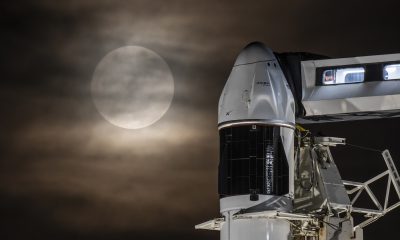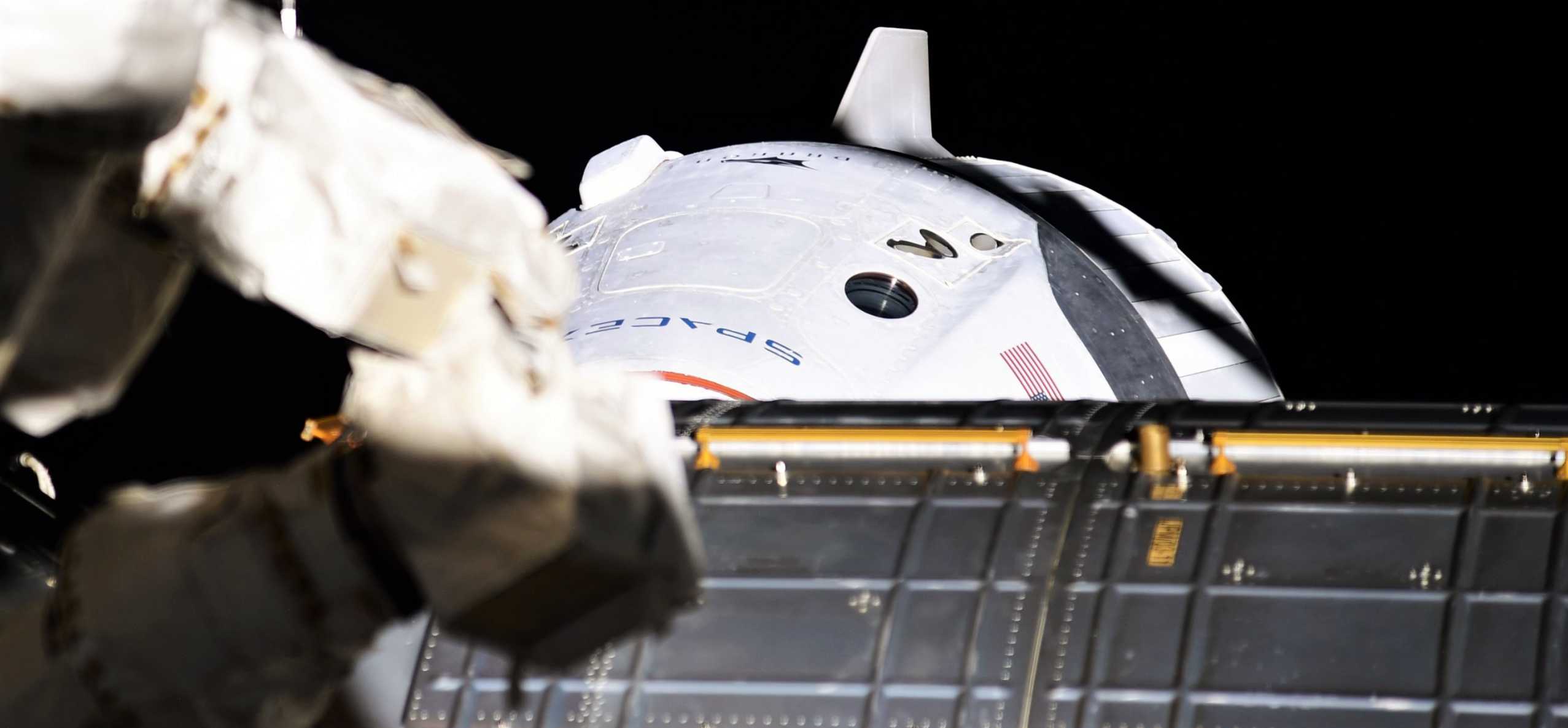

News
SpaceX Crew Dragon spaceship to bring NASA astronauts home this summer
Bob Behnken and Doug Hurley launched to the space station on May 30, for an indeterminate amount of time. Their stay on orbit depends upon a few different factors, including solar array degradation, the status of the next Crew Dragon, and landing zone weather. While Bob and Doug do not yet have a definitive return date, NASA officials have said they are looking at August as a return time frame.
The mission, known as Demo-2, is the first to fly humans from Florida since the end of the shuttle program in 2011. It’s also SpaceX’s first mission to carry astronauts. But it won’t be the last. The California-based aerospace company is gearing up for its next crewed mission. Known as Crew-1, this flight will see three NASA astronauts, and one Japanese astronaut soar to the space station inside another Crew Dragon capsule.
The two missions are interconnected. Demo-2 is the final test flight of the Crew Dragon capsule, and at the end of the mission, NASA is expected to certify the craft to regularly carry humans to and from the space station. For nearly a decade, NASA has been solely dependent upon Russia to carry its astronauts, but now, the agency will have more flexibility with flights.
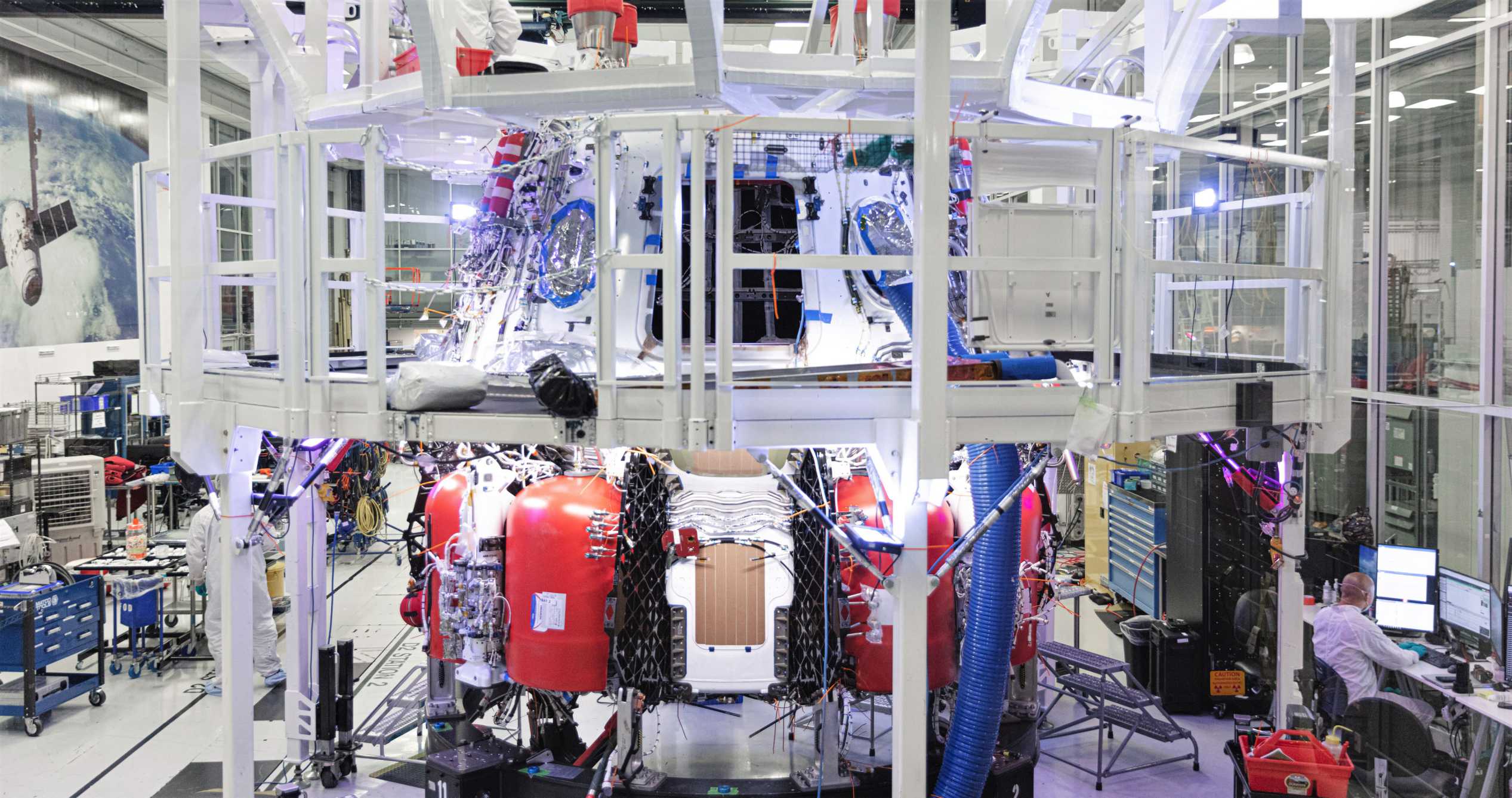
Before Demo-2 launched, NASA officials estimated that the Bob and Doug could stay on station anywhere from one to four months. The agency wanted to see how the Dragon performed on orbit before specifying the length of time the crew would remain on orbit.
“We didn’t prescribe the length of the Demo-2 mission until we got the crew on orbit and we could see the performance of the Dragon,” Ken Bowersox, acting administrator for NASA’s human spaceflight program said on Tuesday. “The Dragon is doing very well, so we think it’s reasonable for the crew to stay up there a month or two. The actual details are still being worked out.”
Bowersox explained that the mission is going well, and the spacecraft is holding up as expected. The Crew version of SpaceX’s Dragon capsule has been to the space station one other time. During its first test flight, called Demo-1. This mission launched in 2019, without people on board. The craft proved it could dock and undock itself with the space station, and even spent about a week attached to the orbital outpost.
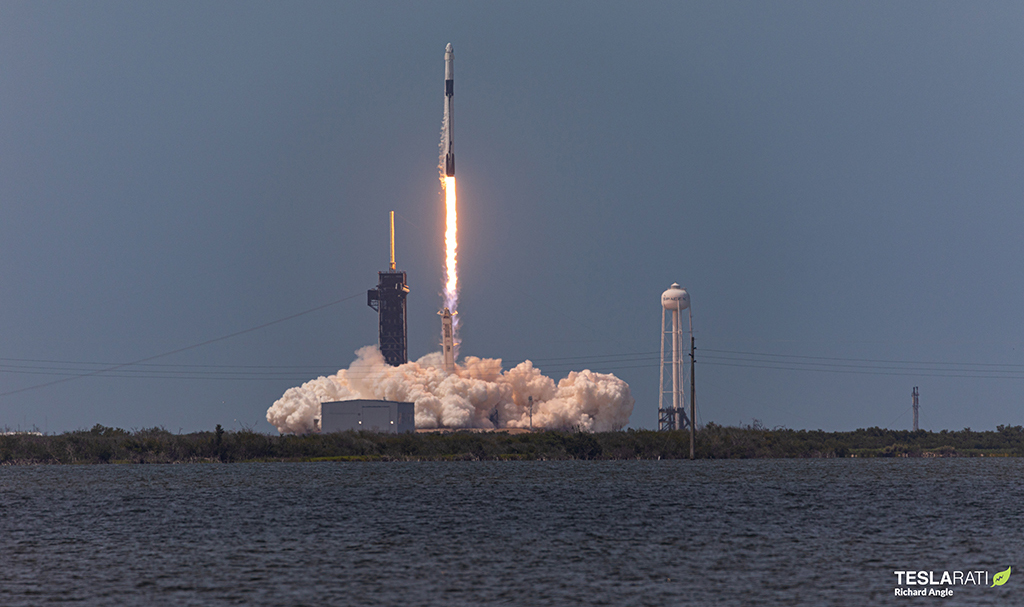
Now, NASA and SpaceX are putting the craft through its paces and seeing how well it holds up over time against the harsh environment of outer space. Some of the craft’s most sensitive electronics, namely the solar panels, have a shelf life in space. That time period is limited to 120 days, so NASA wants the crew to come home before that time.
The next batch of astronauts are expected to launch in late August or early September, if all goes according to plan. But, in order for them to launch, Bob and Doug have to come home several weeks before the planned liftoff so that the Dragon can be evaluated and certified.
To that end, NASA is looking at bringing the Demo-2 crew home in late July or early August. This will allow them to help with station maintenance, as well perform a spacewalk or two. Since April, Chris Cassidy has been the sole NASA astronauts on board, as the space station has been operating on a skeleton crew. The addition of Bob and Doug allows the crew to do more routine maintenance, as well as some research experiments.
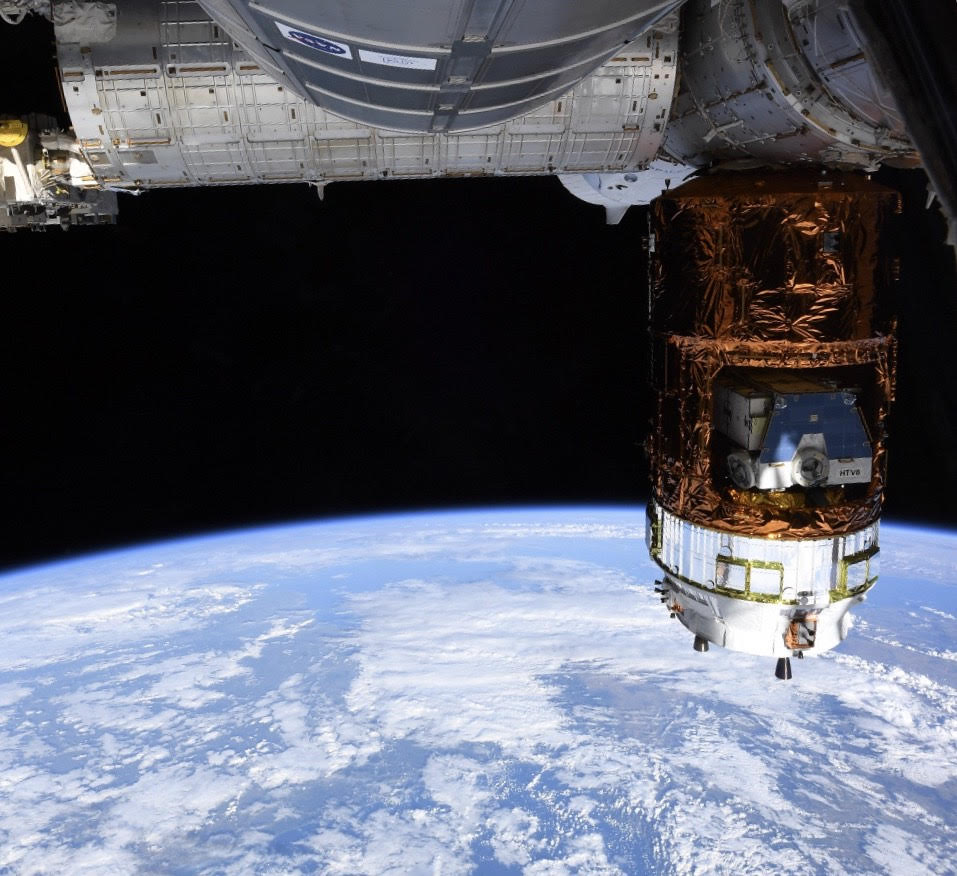
Bob Behnken is expected to perform at least two spacewalks — one in late June, followed by one in early July. Behnken will join Chris Cassidy in replacing batteries on the space station’s exterior. The batteries were delivered on a recent cargo resupply mission and will help power the space station.
While Behnken is suited up and working outside the station, Doug Hurley will operate the space station’s robotic arm, helping Behnken and Cassidy move about during their spacewalks.
The plans were brought up in a joint meeting on Tuesday of the National Academies of Sciences, Engineering and Medicine’s Space Studies Board and the Aeronautics and Space Engineering Board.

“It is very likely that by the end of July, we will have conducted some spacewalks with Chris Cassidy and Bob Behnken, replaced some batteries on the ISS, and we’ll — about two months from now — start thinking about bringing Bob and Doug home,” Bowersox said. “We’d like to get them home some time in August.”
Bowersox is a former astronaut, who flew on five shuttle missions. He recently took over as acting head of NASA’s human spaceflight division after the previous administrator, Doug Loverro, suddenly resigned. That change in leadership took place just days before Hurley and Behnken took flight. Industry sources say Loverro’s departure had to do with him breaking agency rules during a competition to procure bids for NASA’s upcoming lunar lander program.
While the timing was suspect, the Demo-2 mission was unaffected and went off without a hitch.
Check out Teslarati’s Marketplace! We offer Tesla accessories, including for the Tesla Cybertruck and Tesla Model 3.
Elon Musk
Tesla investors will be shocked by Jim Cramer’s latest assessment
Jim Cramer is now speaking positively about Tesla, especially in terms of its Robotaxi performance and its perception as a company.
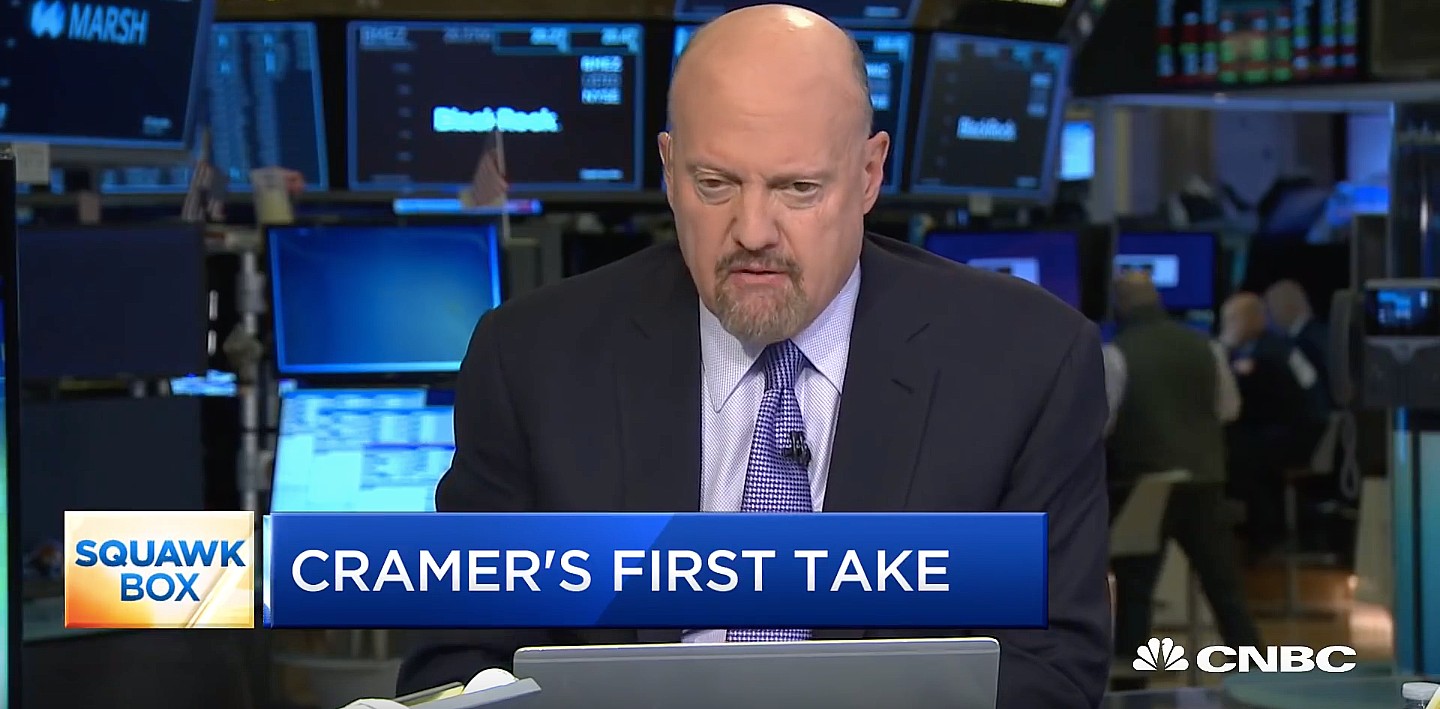
Tesla investors will be shocked by analyst Jim Cramer’s latest assessment of the company.
When it comes to Tesla analysts, many of them are consistent. The bulls usually stay the bulls, and the bears usually stay the bears. The notable analysts on each side are Dan Ives and Adam Jonas for the bulls, and Gordon Johnson for the bears.
Jim Cramer is one analyst who does not necessarily fit this mold. Cramer, who hosts CNBC’s Mad Money, has switched his opinion on Tesla stock (NASDAQ: TSLA) many times.
He has been bullish, like he was when he said the stock was a “sleeping giant” two years ago, and he has been bearish, like he was when he said there was “nothing magnificent” about the company just a few months ago.
Now, he is back to being a bull.
Cramer’s comments were related to two key points: how NVIDIA CEO Jensen Huang describes Tesla after working closely with the Company through their transactions, and how it is not a car company, as well as the recent launch of the Robotaxi fleet.
Jensen Huang’s Tesla Narrative
Cramer says that the narrative on quarterly and annual deliveries is overblown, and those who continue to worry about Tesla’s performance on that metric are misled.
“It’s not a car company,” he said.
He went on to say that people like Huang speak highly of Tesla, and that should be enough to deter any true skepticism:
“I believe what Musk says cause Musk is working with Jensen and Jensen’s telling me what’s happening on the other side is pretty amazing.”
Tesla self-driving development gets huge compliment from NVIDIA CEO
Robotaxi Launch
Many media outlets are being extremely negative regarding the early rollout of Tesla’s Robotaxi platform in Austin, Texas.
There have been a handful of small issues, but nothing significant. Cramer says that humans make mistakes in vehicles too, yet, when Tesla’s test phase of the Robotaxi does it, it’s front page news and needs to be magnified.
He said:
“Look, I mean, drivers make mistakes all the time. Why should we hold Tesla to a standard where there can be no mistakes?”
It’s refreshing to hear Cramer speak logically about the Robotaxi fleet, as Tesla has taken every measure to ensure there are no mishaps. There are safety monitors in the passenger seat, and the area of travel is limited, confined to a small number of people.
Tesla is still improving and hopes to remove teleoperators and safety monitors slowly, as CEO Elon Musk said more freedom could be granted within one or two months.
News
Tesla launches ultra-fast V4 Superchargers in China for the first time
Tesla has V4 Superchargers rolling out in China for the first time.
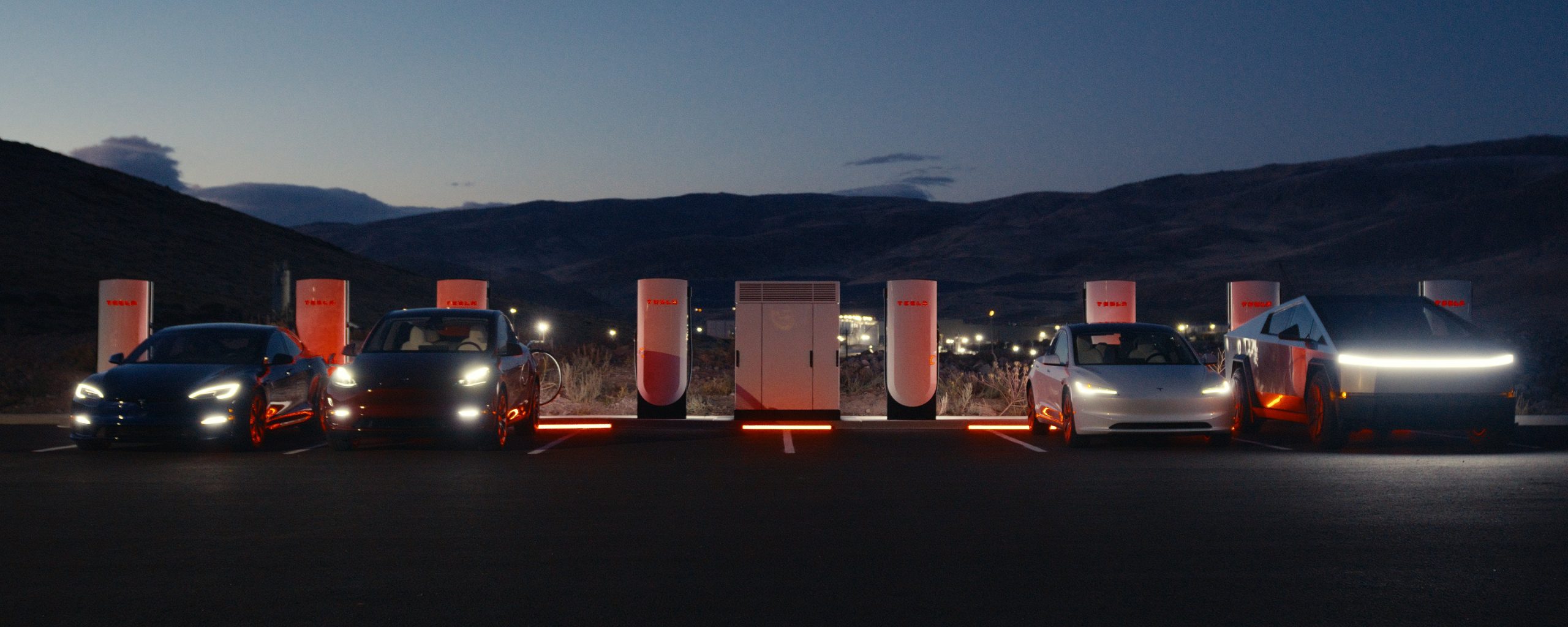
Tesla already has nearly 12,000 Supercharger piles across mainland China. However, the company just initiated the rollout of the ultra-fast V4 Superchargers in China for the first time, bringing its quick-charging piles to the country for the first time since their launch last year.
The first batch of V4 Superchargers is now officially up and running in China, the company announced in a post on Chinese social media outlet Weibo today.
The company said in the post:
“The first batch of Tesla V4 Superchargers are online. Covering more service areas, high-speed charging is more convenient, and six-layer powerful protection such as rain and waterproof makes charging very safe. Simultaneously open to non-Tesla vehicles, and other brands of vehicles can also be charged. There are more than 70,000 Tesla Superchargers worldwide. The charging network layout covers 100% of the provincial capitals and municipalities in mainland China. More V4 Superchargers will be put into use across the country. Optimize the charging experience and improve energy replenishment efficiency. Tesla will accompany you to the mountains, rivers, lakes, and seas with pure electricity!”
The first V4 Superchargers Tesla installed in China are available in four cities across the country: Shanghai, Zhejiang, Gansu, and Chongqing.
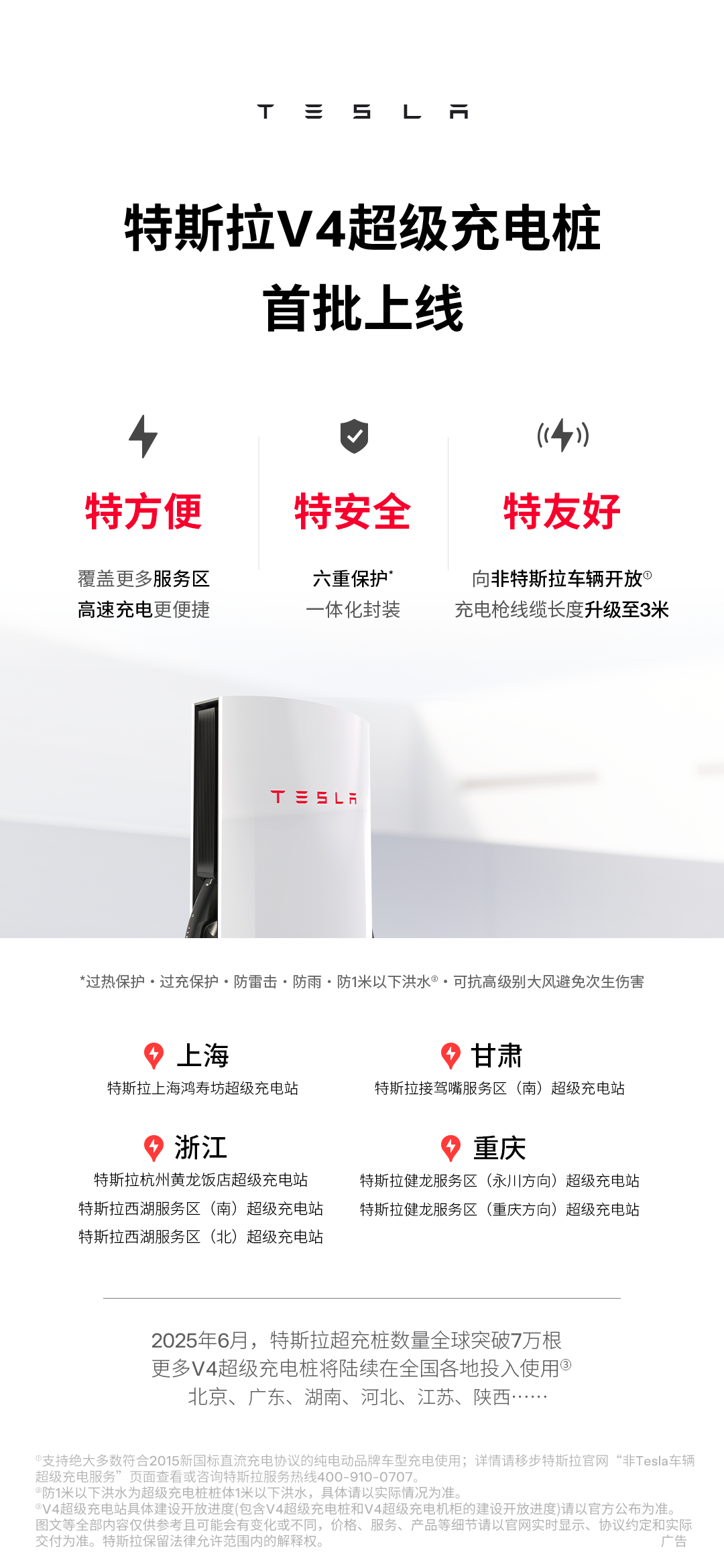
Credit: Tesla China
Tesla has over 70,000 Superchargers worldwide. It is the most expansive and robust EV charging network in the world. It’s the main reason why so many companies have chosen to adopt Tesla’s charging connector in North America and Europe.
In China, some EVs can use Tesla Superchargers as well.
The V4 Supercharger is capable of charging vehicles at speeds of up to 325kW for vehicles in North America. This equates to over 1,000 miles per hour of charging.
Elon Musk
Elon Musk hints at when Tesla could reduce Safety Monitors from Robotaxi
Tesla could be reducing Safety Monitors from Robotaxi within ‘a month or two,’ CEO Elon Musk says.

Elon Musk hinted at when Tesla could begin reducing Safety Monitors from its Robotaxis. Safety Monitors are Tesla employees who sit in the front passenger seat during the driverless rides, and are there to ensure safety for occupants during the earliest rides.
Tesla launched its Robotaxi fleet in Austin last Sunday, and after eight days, videos and reviews from those who have ridden in the driverless vehicles have shown that the suite is safe, accurate, and well coordinated. However, there have been a few hiccups, but nothing that has put anyone’s safety in danger.
A vast majority — close to all of the rides — at least according to those who have ridden in the Robotaxi, have been performed without any real need for human intervention. We reported on what was the first intervention last week, as a Safety Monitor had to step in and stop the vehicle in a strange interaction with a UPS truck.
Watch the first true Tesla Robotaxi intervention by safety monitor
The Tesla and UPS delivery truck were going for the same street parking space, and the Tesla began to turn into it. The UPS driver parallel parked into the spot, which was much smaller than his truck. It seemed to be more of an instance of human error instead of the Robotaxi making the wrong move. This is something that the driverless cars will have to deal with because humans are aggressive and sometimes make moves they should not.
The Safety Monitors have not been too active in the vehicles. After all, we’ve only seen that single instance of an intervention. There was also an issue with the sun, when the Tesla braked abnormally due to the glare, but this was an instance where the car handled the scenario and proceeded normally.
With the Robotaxi fleet operating impressively, some are wondering when Tesla will begin scaling back both the Safety Monitors and Teleoperators that it is using to ensure safety with these early rides.
CEO Elon Musk answered the inquiry by stating, “As soon as we feel it is safe to do so. Probably within a month or two.”
As soon as we feel it is safe to do so.
Probably within a month or two. We continue to improve the Tesla AI with each mile driven.
— Elon Musk (@elonmusk) June 30, 2025
Musk’s response seems to confirm that there will be fewer Teleoperators and Safety Monitors in the coming months, but there will still be some within the fleet to ensure safety. Eventually, that number will get to zero.
Reaching a point where Tesla’s Robotaxi is driverless will be another significant milestone for the company and its path to fully autonomous ride-sharing.
Eventually, Tesla will roll out these capabilities to consumer-owned vehicles, offering them a path to generate revenue as their car operates autonomously and completes rides.
For now, Tesla is focusing on perfecting the area of Austin where it is currently offering driverless rides for just $4.20 to a small group of people.
-

 News5 days ago
News5 days agoTesla Robotaxi’s biggest challenge seems to be this one thing
-
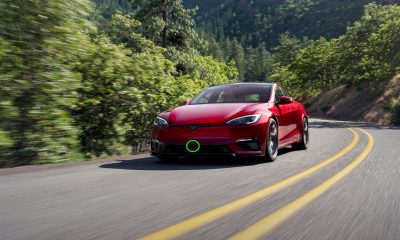
 News2 weeks ago
News2 weeks agoTesla confirms massive hardware change for autonomy improvement
-

 Elon Musk2 weeks ago
Elon Musk2 weeks agoElon Musk slams Bloomberg’s shocking xAI cash burn claims
-

 News2 weeks ago
News2 weeks agoTesla China roars back with highest vehicle registrations this Q2 so far
-
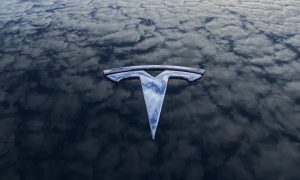
 News2 weeks ago
News2 weeks agoTesla features used to flunk 16-year-old’s driver license test
-

 News2 weeks ago
News2 weeks agoTexas lawmakers urge Tesla to delay Austin robotaxi launch to September
-

 News2 weeks ago
News2 weeks agoTesla dominates Cars.com’s Made in America Index with clean sweep
-

 News2 weeks ago
News2 weeks agoTesla’s Grok integration will be more realistic with this cool feature












